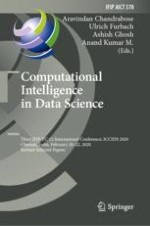2020 | Book
Computational Intelligence in Data Science
Third IFIP TC 12 International Conference, ICCIDS 2020, Chennai, India, February 20–22, 2020, Revised Selected Papers
Editors: Prof. Aravindan Chandrabose, Prof. Dr. Ulrich Furbach, Dr. Ashish Ghosh, Assist. Prof. Anand Kumar M.
Publisher: Springer International Publishing
Book Series : IFIP Advances in Information and Communication Technology
